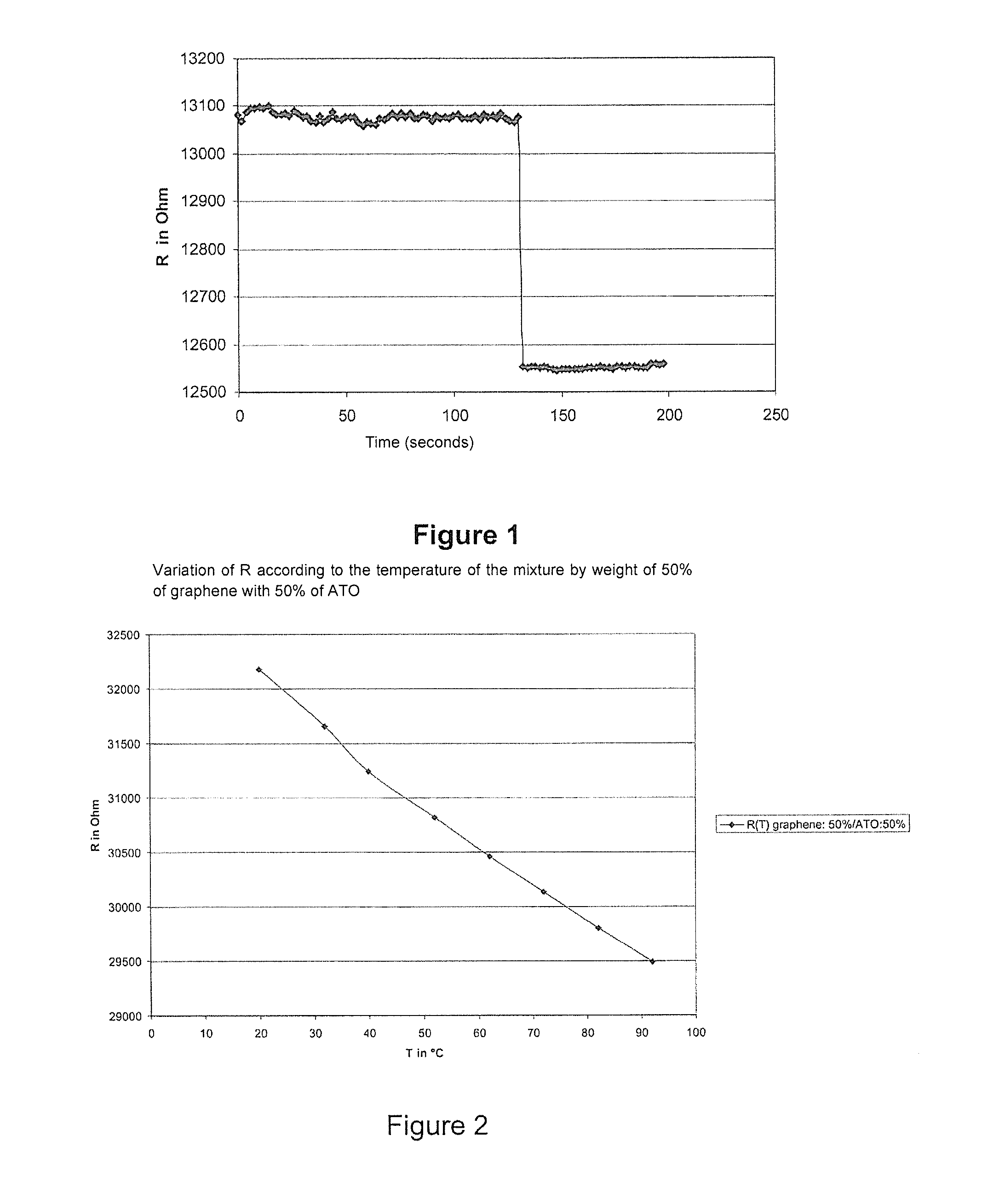Photosensitive And Heat-Resistant Material, Method For Producing Same And Use Thereof
a technology of heat-resistant materials and photosensitive materials, applied in the direction of non-adjustable resistors, inorganic chemistry, tin compounds, etc., can solve the problems of prior art materials, inability to meet infrared applications, and general unfit materials for infrared applications, and achieve the effect of low cos
- Summary
- Abstract
- Description
- Claims
- Application Information
AI Technical Summary
Benefits of technology
Problems solved by technology
Method used
Image
Examples
Embodiment Construction
[0068]Preparation of the photoresistive and heat-resistant material according to the invention
[0069]A graphene ink is prepared by dispersing 6 g of graphene (VORBECK) in 10 ml of cyclopentanone, for example.
[0070]Concurrently, an ATO ink is prepared by dispersing 6 g of ATO (DUPONT) in 10 ml of cyclopentanone.
[0071]The graphene and ATO inks are then mixed to obtain a graphene / ATO weight ratio of 4.
[0072]This mixture is then added from 0 to 10 mg of a mixture of silver, In2O3, InZnO, ZnO, CuO, NiO nanoparticles, or of silver and InGaZnO nanoparticles according to another embodiment.
[0073]The resulting mixture is then mechanically stirred at a 60° C. temperature.
[0074]The obtained solution is then dried by evaporation of the solvents at 100° C., under air.
[0075]Preparation of a photoresistor or of a thermistor according to the invention
[0076]The mixture obtained hereabove is deposited, before evaporation of the solvents, on a substrate by silk screening.
[0077]The PEN substrate has a 1...
PUM
 Login to View More
Login to View More Abstract
Description
Claims
Application Information
 Login to View More
Login to View More - R&D
- Intellectual Property
- Life Sciences
- Materials
- Tech Scout
- Unparalleled Data Quality
- Higher Quality Content
- 60% Fewer Hallucinations
Browse by: Latest US Patents, China's latest patents, Technical Efficacy Thesaurus, Application Domain, Technology Topic, Popular Technical Reports.
© 2025 PatSnap. All rights reserved.Legal|Privacy policy|Modern Slavery Act Transparency Statement|Sitemap|About US| Contact US: help@patsnap.com

